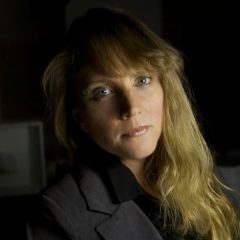Everyone makes waste: Using accessible art and design practices to increase the visibility of food-based waste, by Pamela Tudge
All of us make waste; it is from us and lives with us. It also represents resources and virgin materials from around the globe and considerable research has demonstrated that waste materials threaten all species and contribute to climate change. When it comes to food-based waste, all the waste from our domestic cooking and eating, the household is the primary source. Through our practices, the materials from our food become ephemeral, rendering them invisible in daily life. How can we redirect our material future as a society, increasing the visibility and care for the materials?
In this workshop, we will work with critical design public pedagogy to examine our domestic waste through a food-centred perspective and use this lens to adopt a renewed attention to the material visibility of waste. Material visibility advocates for the care of materials by creating closer relations between us and things for a more substantial food-based waste knowledge. It strives for a kind of engagement that limits judgment or consumer guilt, focusing on creating relations through situated making. This workshop will explore material visibility through a series of creative learning encounters with the waste in our homes or workspaces. We will review the work of waste-centred artists and designers, play with materials, make collages and create prints and share leftover recipes. Topics discussed will include Canada’s waste crisis, critical and speculative design, vital materialism, and feminist new materialism.
For this hands-on workshop, please have ready the following items:
- food waste (e.g. banana peel, apple core)
- food packaging that is soft plastic (e.g. plastic bag)
- food packaging that is hard plastic (e.g. yogurt container, milk container)
- food packaging that is paper
- food packaging that is glass
- any material you consider food-based waste, not defined above
- digital copy of your favourite leftover recipe
Plus, the following tools:
- white wood glue or other non-toxic glue
- scissors
- a large piece of paper
- optional: digital camera or smartphone camera
Bio:
 Pamela Tudge thinks of herself as part food nerd, part academic, and part environmentalist who really loves design and art that makes her think deeper about the world. At Concordia University, she is a PhD candidate in the Individualized Program with an interdisciplinary focus across the fields of Design, Communications and History to research domestic practices in food and waste. Her writing and teaching for over 15 years has spanned food studies, environmental science, critical art and design and social movements. Pamela has worked in the fields of cartography, climate science, education and the arts. She holds a Master’s in Geography from University of British Columbia and a Bachelors with Honors in Geography and Environmental Studies from the University of Victoria.
Pamela Tudge thinks of herself as part food nerd, part academic, and part environmentalist who really loves design and art that makes her think deeper about the world. At Concordia University, she is a PhD candidate in the Individualized Program with an interdisciplinary focus across the fields of Design, Communications and History to research domestic practices in food and waste. Her writing and teaching for over 15 years has spanned food studies, environmental science, critical art and design and social movements. Pamela has worked in the fields of cartography, climate science, education and the arts. She holds a Master’s in Geography from University of British Columbia and a Bachelors with Honors in Geography and Environmental Studies from the University of Victoria.